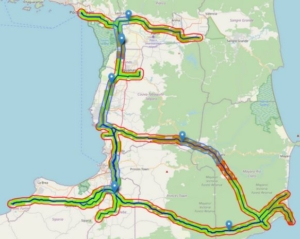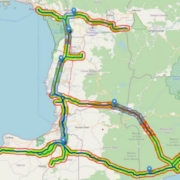Tasking optimization of high-resolution satellites
Orbital Eye uses 2 types of satellite data for effective pipeline monitoring; Synthetic Aperture Radar (SAR) and optical data. A high temporal SAR analysis is performed for the full pipeline network to detect Third Party Interferences (TPIs) near the network.
Disadvantage of SAR? You can detect a change, but not always the exact cause.
So why not just use high-resolution imagery instead of radar?
✅ SAR data can be used in the presence of clouds
✅ SAR data is free, high-resolution images are not
To complement the SAR data, we order high-res images, but only for the areas where the SAR has detected potential TPIs, to avoid unnecessary tasking of high-res satellites. This calls for a classic optimization approach: how to cover the maximum number of radar TPIs with the minimum amount of high-res km2, taking into account various constraints and environmental parameters.
Using advanced optimization algorithms, such as differential evolution, particle swarm optimization and various other genetic algorithms, our in-house developed automated tasking tool is able to find the best possible areas to be submitted for tasking by a high-res satellite. The implementation of this tool is a big step forward to further enhance the scalability of our pipeline monitoring solution CoSMiC-EYE.






